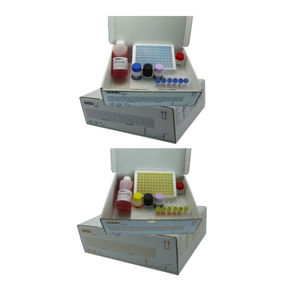

- Products
- Catalogs
- News & Trends
- Exhibitions
Solution reagent kit PN 2015diagnosticfor diabeteslaboratory
Add to favorites
Compare this product
fo_shop_gate_exact_title
Characteristics
- Type
- solution
- Applications
- diagnostic, for diabetes, laboratory, blood sample, for electrophoresis
- Tested parameter
- HbA1c, blood glucose
Description
As of today more than 463 million of people have diabetes worldwide(1), and around 50 % of people having diabetes are undiagnosed.
Glycated hemoglobin (HbA1c) is a key parameter in the diagnosis of diabetes, HbA1c reflects the average blood glucose over the 3 past months.
WHO(2) has concluded, almost one decade ago, that HbA1c can be used as a diagnostic test for diabetes. An HbA1c of 6.5% (48 mmol/mol) is recommended as the cut point for diagnosing diabetes.
The HbA1c test is an indispensable part of routine management of diabetes.
Based on many years of experiences in Capillary electrophoresis technology, Sebia has adapted this technology for HbA1c testing. This innovative technology provides to laboratories and clinicians accurate and meaningful results to ensure a better patient management.
Key benefits
Excellent separation
The clear-cut and precise separation of the different hemoglobin fractions allows accurate HbA1c measurement thanks to high resolution separation of our capillary instruments.
No interferences
There is no alteration of results in the presence of frequent interferences(3) (labile A1c, carbamylated Hb, Hb F, Hb S, Hb C, Hb D and Hb E) as well as the incidental detection of the common hemoglobin disorders (sickle cell, beta-thalassemia…).
Meaningful results
Using the IFCC reference method calculation formula HbA1c/(HbA1c+HbA0), developed for the worldwide assay standardization, the Sebia methodology ensures accurate and reliable results.
Related Searches
- Solution reagent kit
- Molecular biology reagent kit
- Diagnostic reagent kit
- Laboratory reagent kit
- Protein reagent kit
- Laboratory software
- Blood sample reagent kit
- Clinical reagent kit
- Reporting software
- Serum reagent kit
- POC reader
- Data management software
- Test software
- Server software
- Electrophoresis reagent kit
- Interpretation software
- Infectious disease POCT analyzer
- Urine sample reagent kit
- Validation software
- Turbidimetry reagent kit
*Prices are pre-tax. They exclude delivery charges and customs duties and do not include additional charges for installation or activation options. Prices are indicative only and may vary by country, with changes to the cost of raw materials and exchange rates.

